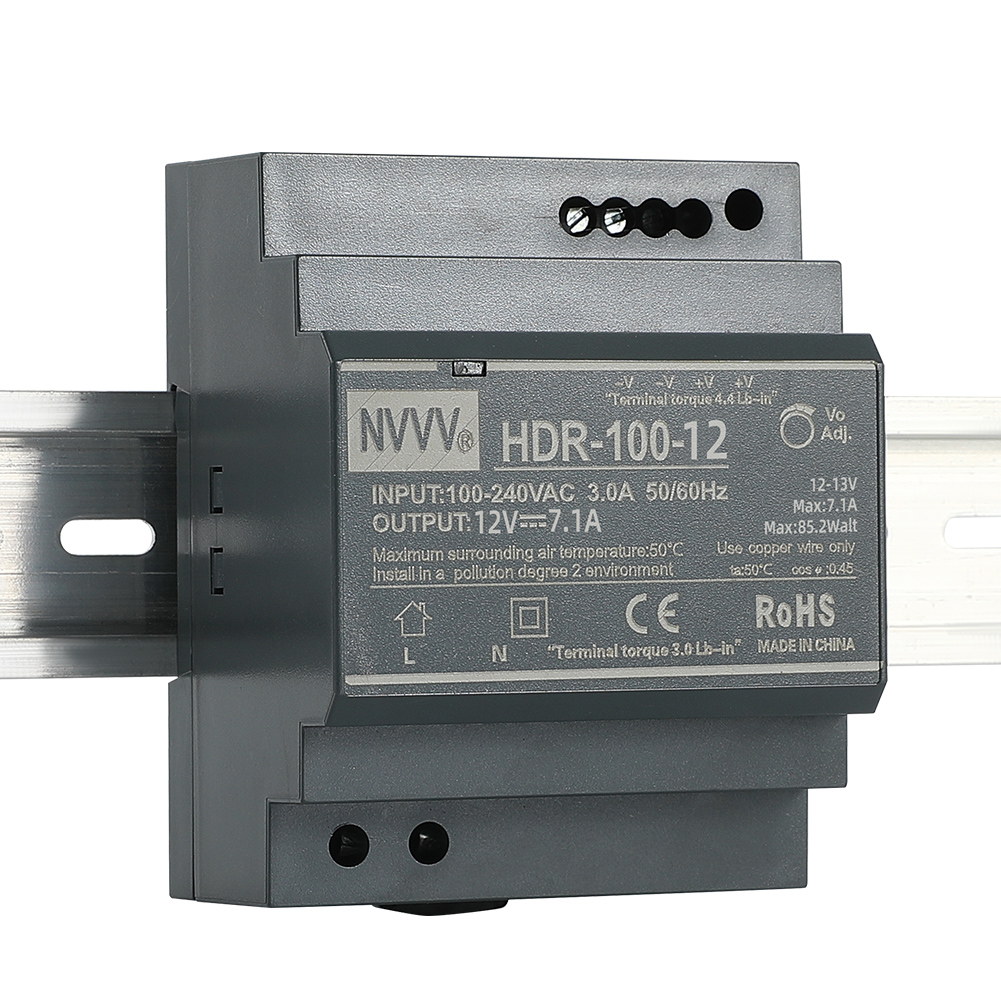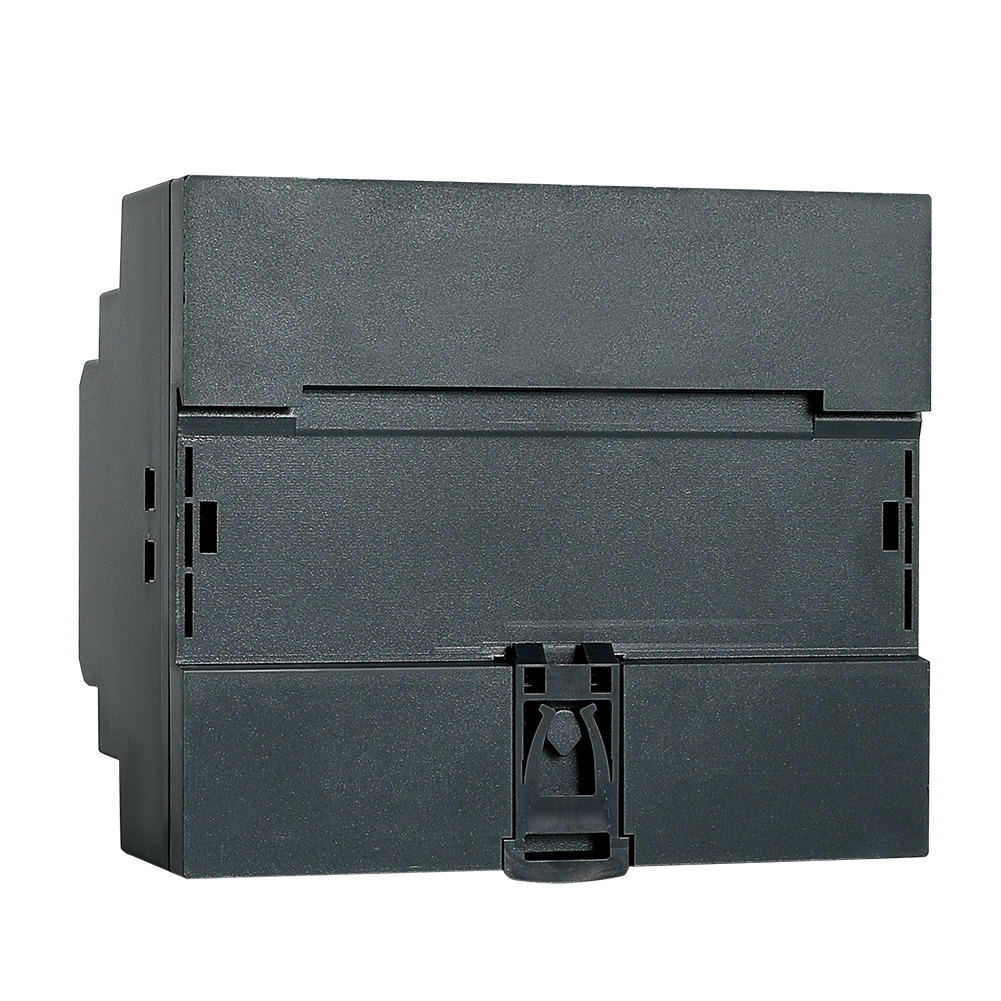Is a Switching Power Supply Better Than a Transformer?
In the field of electrical engineering, the choice between a switch mode power supply (SMPS) and a transformer is crucial for various applications. Both technologies offer unique features, advantages, and limitations. This article delves into what SMPS and transformers are, their primary differences, and how to choose the right one for specific scenarios.
What is a Switch Mode Power Supply (SMPS) ?
Most industrial facilities today rely on alternating current (AC) power, but many industrial devices require direct current (DC) to operate. This is where the switch mode power supply (SMPS) comes into play.
A switch mode power supply, also known as a switched-mode power supply, is an electronic power converter that integrates a switching regulator to efficiently convert electrical power. It employs high-frequency switching technology to deliver the desired output voltage and current.
Figure 1: Din Rail Switching Power Supply Front View
1. Basic Working Principle of SMPS
The operation of SMPS involves several key steps:
Rectification: Converts AC input into DC voltage using rectifiers.
Switching: Uses high-speed switching transistors to chop the DC voltage into high-frequency AC signals.
Transformation: Passes the high-frequency AC through a small transformer to adjust the voltage level.
Rectification and Filtering: Converts the transformed AC back into DC and filters it to reduce noise and ripple.
2. Key Components of SMPS
Switching Transistor: The core element responsible for high-speed switching operations.
Transformer: Handles high-frequency voltage transformation with reduced size.
Rectifier: Converts AC to DC at both the input and output stages.
Filter Capacitor: Smooths the DC output to ensure stability.
Control Circuitry: Monitors and adjusts switching frequency and duty cycle for precise voltage regulation.
What is a Transformer?
Large industrial facilities often require voltage adjustments for different machinery, which necessitates the use of transformers.
A transformer is an electrical device that transfers electrical energy between two or more circuits through electromagnetic induction. It consists of primary and secondary windings wound around a magnetic core and is used to change voltage levels without altering the frequency.
1. Basic Working Principle of Transformers
The operation of transformers involves:
Electromagnetic Induction: Alternating current in the primary winding creates a changing magnetic field in the core.
Voltage Transformation: The changing magnetic field induces a voltage in the secondary winding, which can be either higher or lower than the primary voltage depending on the winding ratio.
2. Key Components of Transformers
Primary and Secondary Windings: Coils that carry the input and output current, respectively.
Magnetic Core: Enhances magnetic coupling between windings and supports efficient energy transfer.
Insulation Material: Provides electrical isolation between windings and core.
Is a Switching Power Supply Better Than a Transformer?
Key Differences Between Switching power supply and Transformer
1. Efficiency
SMPS: Due to its high-frequency operation, SMPS minimizes power loss during voltage regulation, making it highly efficient.
Transformer: Efficiency varies and is typically lower for low-frequency transformers due to energy losses in the core and windings.
2. Size and Weight
SMPS: High-frequency operation allows for smaller transformers and components, resulting in a more compact and lightweight design.
Transformer: Larger and heavier, especially in high-power applications, due to the need for substantial core and winding materials.
3. Cost
SMPS: Cost-effective for low- and medium-power applications but may become expensive for high-power scenarios due to complex design and component requirements.
Transformer: Initial costs are higher due to material and construction, but they are cost-efficient in the long run for high-power applications.
4. Performance and Reliability
SMPS: Offers precise voltage regulation and adapts well to dynamic load conditions but is susceptible to noise and electromagnetic interference (EMI).
Transformer: Highly reliable, with fewer failure points and stable performance over extended periods.
Advantages of SMPS
1. High Efficiency
SMPS is designed to operate with minimal power loss, making it ideal for applications where energy conservation is crucial.
2. Compact and Lightweight
The use of high-frequency transformers enables SMPS units to be smaller and lighter, making them suitable for portable or space-constrained applications.
3. Cost-Effectiveness
While the design is complex, the overall manufacturing and operating costs are lower for low- to medium-power applications.
4. Enhanced Regulation
Switching mode power supply offers precise voltage regulation and performs well under varying load conditions, ensuring consistent output.
Figure 2: Back of Din Rail Switching Power Supply
Advantages of Transformers
1. Simplicity and Durability
Transformers have a simple design with no moving parts, making them highly durable and requiring minimal maintenance.
2. High Reliability
Known for their robustness, transformers can operate reliably for decades with negligible degradation in performance.
3. Low Noise and Interference
Transformers do not generate high-frequency noise or EMI, making them suitable for sensitive applications.
4. Suited for High-Power Applications
Transformers excel in high-power and high-voltage scenarios, such as power distribution and industrial operations.
Applications
Where SMPS Excels:
Consumer Electronics: Powering computers, televisions, and battery chargers.
Industrial Automation: Providing energy-efficient power solutions for machines and systems.
Portable Devices: Compact power supplies for medical instruments and communication equipment.
Where Transformers Excel:
Power Distribution: Transmitting electricity from power stations to end users.
Heavy Industries: Supplying high power to manufacturing machinery.
Sensitive Applications: Audio equipment and laboratory instruments where noise-free operation is essential.
Conclusion
Understanding the differences, advantages, and limitations of SMPS and transformers can help make informed decisions in electrical engineering applications. Both technologies are indispensable, and each is tailored for specific scenarios. SMPS devices are efficient and compact, while transformers are reliable and simple. Careful analysis of your application requirements will guide you to make the most appropriate choice. Of course, if you have any needs, you can contact us NVVV, we will explain in detail and do our best to help you.









